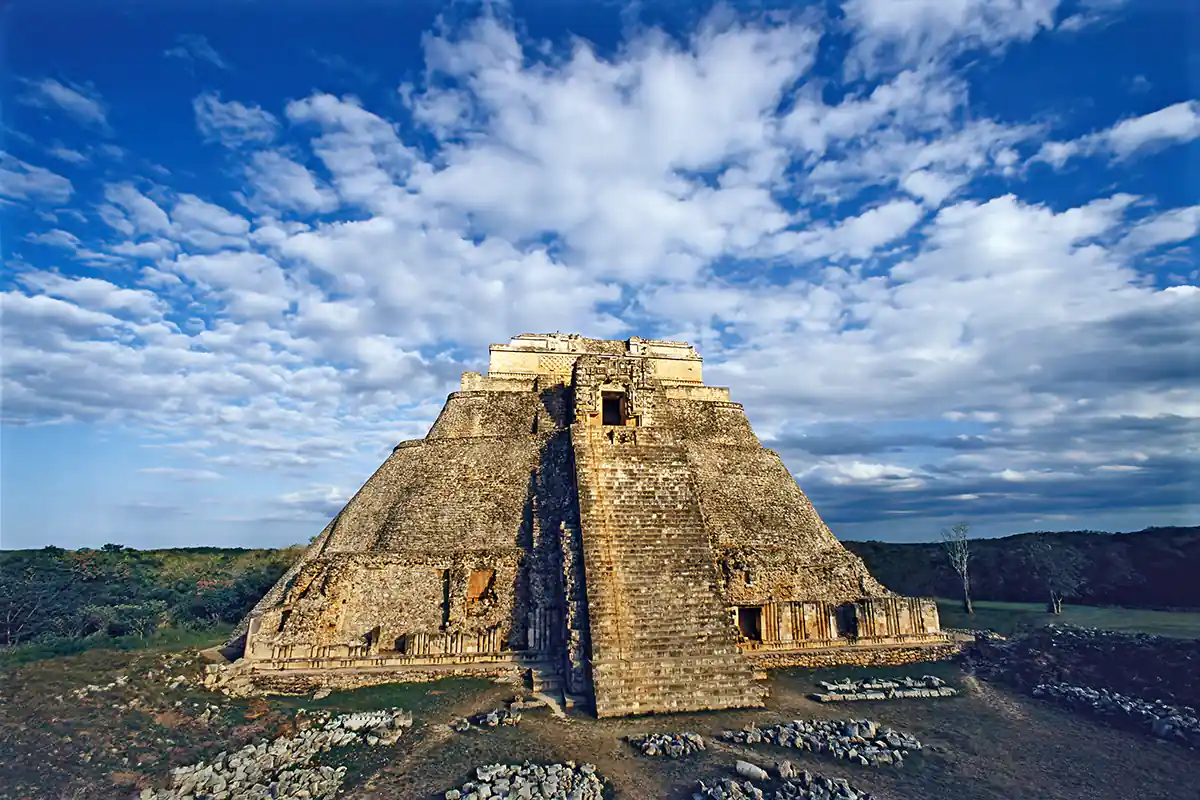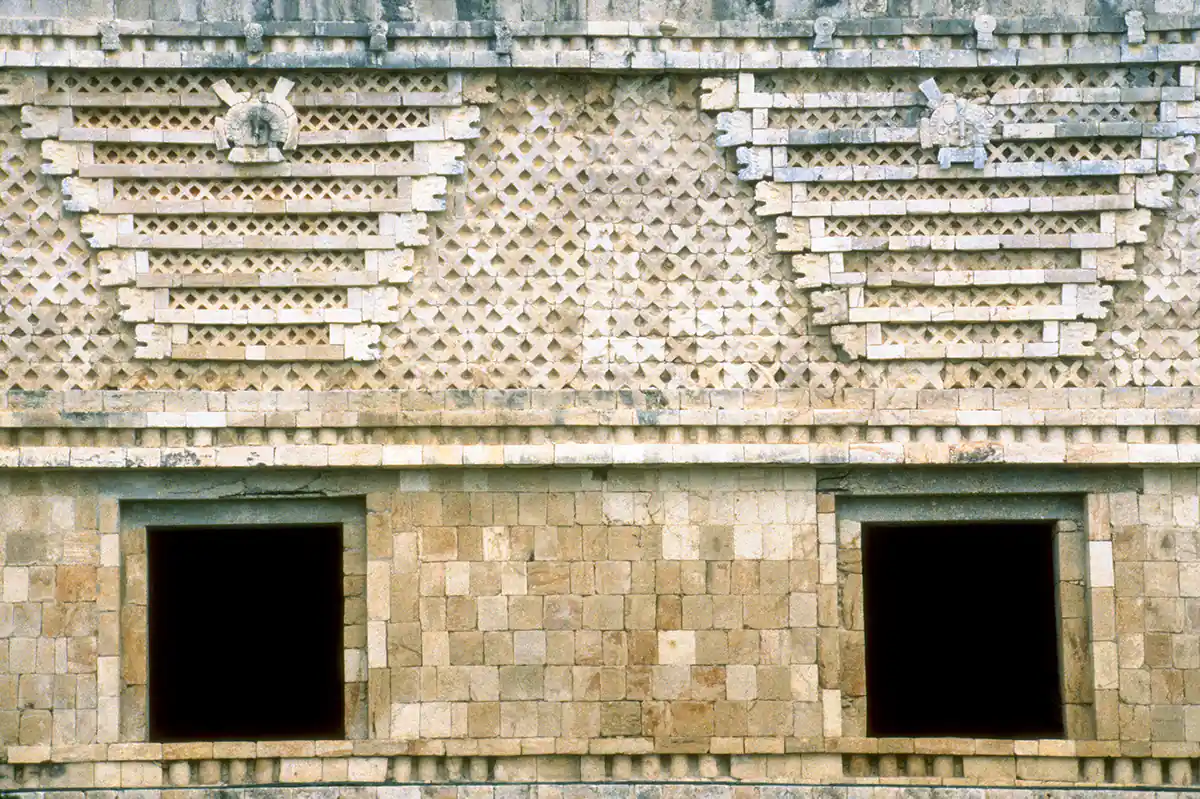Uxmal, Yucatan
Uxmal was the greatest metropolitan and religious center in the Puuc hills of Yucatan during the late Classical period, flourishing between the 7th and 10th centuries AD. Uxmal translates as 'thrice built,' and whatever the actual number, the numerous building phases are reflected in a variety of architectural styles. The city was abandoned in the 10th century after apparently coming under Toltec influence. The names of the currently used structures were coined by the conquering Spanish, and they are neither indigenous nor indicate the actual functions of the buildings. An example is the Nunnery, which was so named for its similarity to the convents of the Spaniards. This structure was used as a school to train healers, astronomers, mathematicians, shamans, and priests.
The Pyramid of the Magician, at 100 feet, is the tallest structure in Uxmal. According to ancient legends, a magician-god named Itzamna single-handedly constructed the pyramid in one night. However, archaeological excavation shows that the pyramid was built in five superimposed phases. The legendary association of the pyramid with a magician may indicate that the structure and the entire sacred part of the Uxmal complex had ancient and ongoing use as a mystery school and ceremonial center. It is also interesting to note that the whole city is aligned with reference to the position of the planets then known, with Venus predominating, and that the pyramid of the magician is oriented so that its stairway on the west faces the setting sun at the time of summer solstice.

Martin Gray is a cultural anthropologist, writer and photographer specializing in the study of pilgrimage traditions and sacred sites around the world. During a 40 year period he has visited more than 2000 pilgrimage places in 160 countries. The World Pilgrimage Guide at sacredsites.com is the most comprehensive source of information on this subject.


